Select committees are becoming increasingly significant, but show an enormous gender bias in their choice of witnesses
Select committees are now firmly established as an important part of our democratic architecture, making a bigger impression than ever before since the implementation of the 2010 Wright Committee reforms. But Democratic Audit research shows a staggering gender gap in the witnesses that provide them with oral evidence. While this is reflective of a set of wider societal problems, Democratic Audit’s Sean Kippin argues that committee chairs and staff must make more effort to increase female visibility at select committees.
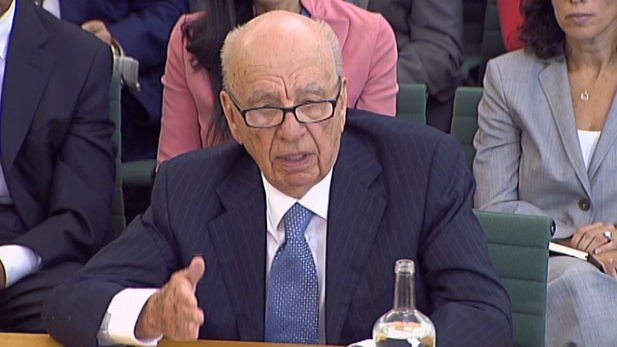
Rupert Murdoch appearing as a witness at the Culture, Media and Sport Committee. Credit: Ben Terrett (CC BY-NC-ND 2.0)
Much of the attention that select committees have garnered over the last three years has been as a result of their choice of witnesses. For example, the Culture, Media and Sport committee infamously saw Murdoch and Son fielding questions in Parliament, leading Rupert Murdoch to unconvincingly remark that it was ‘the most humble day of his life’. Likewise, the redoubtable Margaret Hodge’s Public Accounts Committee has made senior civil servants and outsourcing company chief executives squirm with her aggressive questioning and well-targeted inquiries.
Witnesses are generally chosen – or at least suggested – by the committee chairs and their staff, with input from other committee members. Depending on the subject of the particular inquiry, the identity of a certain amount of them are inevitable. For example, if the Justice Committee holds an inquiry into the role of the Director of Public Prosecutors, it is inevitable that the current post-holder will be amongst those invited to give evidence. Necessarily, the hands of committees are often tied in their choice of committee witness.
As such, a degree of gender imbalance is inevitable. Most committees during the survey time questioned a Government Minister, the majority of whom are men. Likewise, those committees which questioned particular senior civil servants and Quango chiefs may also be fishing in a “men-only” pool. In these cases, the finger of blame should not be pointed squarely at committees, but at successive Governments for declining to pursue policies which will create a more equal distribution across the genders of senior Government positions.
Even so, the figures produced by our analysis are stark. Between October 8th and November 7th 2013 we looked at every House of Commons and House of Lords committee and the witnesses that gave evidence. We compiled a database of 167 committee sessions, featuring 583 witnesses. The full dataset is available to download here.
Overview
As Figure One shows, of 583 witnesses, 439 were men, 75% of the total. Figure Two shows with the number for the Commons committees (76%) marginally more inclined towards men than the Lords (73%) or joint committees of both houses (71%).
Figure One: Total witnesses by gender
Figure Two: Select Committee witnesses by chamber and gender (%)
Independent experts
Where the committees may legitimately come under fire for their choices of witnesses are what we have called the ‘independent experts’ category: those witnesses, independent of Government, who are brought in to provide their take on a particular issue covered by their expertise. These are often academics or individuals with accumulated professional expertise in a subject. By definition, committees have a wider range of choices, and may legitimately select any one of a multitude of options.
Worryingly, as Figure Three below shows, it is the ‘experts’ category which shows the greatest disparity between men and women, with 83% of those appearing during the survey period who could be classified as ‘experts’ being men. The disparity was similar across each category of expert, specifically individuals (those without an organisational affiliation), academics, think tanks, and parliamentarians (excluding ministers).
Figure Three: Independent experts giving evidence to select committees by gender (%)
Individual committees
We looked at the record of a number of individual committees – specifically those calling more than 20 witnesses in this period, providing a larger sample size. Some individual committees fared particularly badly: as Figure Four below shows, the Energy and Climate Change Committee only took evidence from two women out of 32 (or 6%). Likewise, the Transport Committee only spoke to five women out of 27 (19%) and the Environment, Food and Rural Affairs Committee only 5 out of 29 (17%). The House of Commons Science and Technology Committee fared better, with 13 out of 31 committee witnesses being women (42%); however this is likely to be because the subject of the sessions in question was ‘women in STEM careers’. Likewise, the only committee to hear from more women than men – the (temporary) Mental Capacity Act 2005 Committee – heard mainly from caring professionals, from industries with a higher degree of women in senior positions.
Figure Four: Gender breakdown of individual committees’ witnesses (%)
Central government
Those witnesses that could claim to be either a member of, or employed by, the Government (that is, Ministers, quango employees, and civil servants) manage to achieve a greater degree of representativeness. As Figure five shows, 144 of 193 witnesses being men (this is a similar proportion to those who aren’t associated with the Government, with 295 men out of 390). It is striking, here, that the availability of a greater range of options (ie the ‘independent experts’ category) has manifested itself as a more unequal gender divide than the more circumscribed ‘Central government’ category.
Figure Five: Central government witnesses by gender (%)
We can draw two main conclusions from these results. Firstly, committees have not done a particularly good job of achieving any semblance of gender balance in the witnesses they invite to give evidence. They should, where feasible, work towards a 50/50 gender balance.
We should celebrate that select committees are more powerful. Our politics is unrepresentative, cloth-eared, and centralised; committees can be an antidote to that. They are increasingly influential and capable of shaping political opinions and exerting pressure on Ministers to change course if the course is wrong. But if the information they receive rests on an unacceptable gender bias that is in itself dangerous. They risk helping to perpetuate a power imbalance in which policy is made with men, primarily, in mind.
The second conclusion we can draw is that the gender split in this regard speaks to a wider societal discrepancy. Our political and governmental institutions are not representative – either in terms of ethnicity, religion, socio-economic grouping, or, crucially for our purposes here, gender. Where committees have the choice, they should seek gender equality. But this problem is indicative of those wider issues confronting us. Closing the gender divide when it comes to select committee witnesses won’t solve these problems, but as they become more visible and influential, they should at least attempt to lead by example.
Part two of this analysis examines the organisational affiliations of witnesses appearing before select committees. You can also download the full research report here. This article has been amended to remove a section which was critical about a particular Public Administration Committee session.
—
Note: please read our comments policy before posting. The shortened URL for this post is: https://buff.ly/1bUS1ql
—
 Sean Kippin is Managing Editor of Democratic Audit, and is one of two people responsible for DA’s day-to-day management, website, blog and wider output. He has a BA in Politics from the University of Northumbria and an MSc in Political Theory from the LSE. He has worked for MPs Nick Brown and Alex Cunningham, as well as the Smith Institute think tank and interned at the Co-operative Party. He has been at Democratic Audit since June 2013, and can be found on twitter at @se_kip.
Sean Kippin is Managing Editor of Democratic Audit, and is one of two people responsible for DA’s day-to-day management, website, blog and wider output. He has a BA in Politics from the University of Northumbria and an MSc in Political Theory from the LSE. He has worked for MPs Nick Brown and Alex Cunningham, as well as the Smith Institute think tank and interned at the Co-operative Party. He has been at Democratic Audit since June 2013, and can be found on twitter at @se_kip.


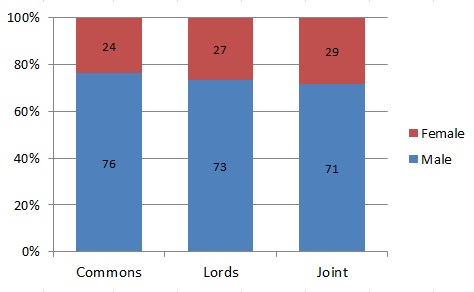
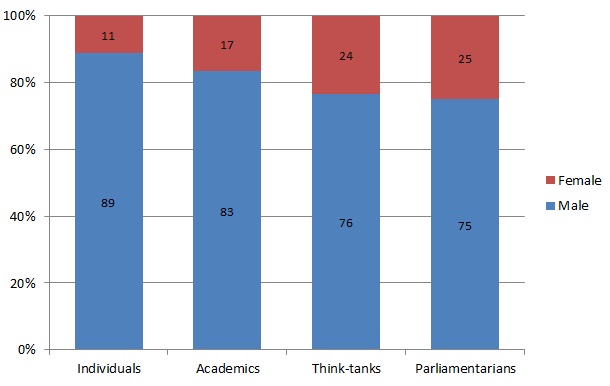
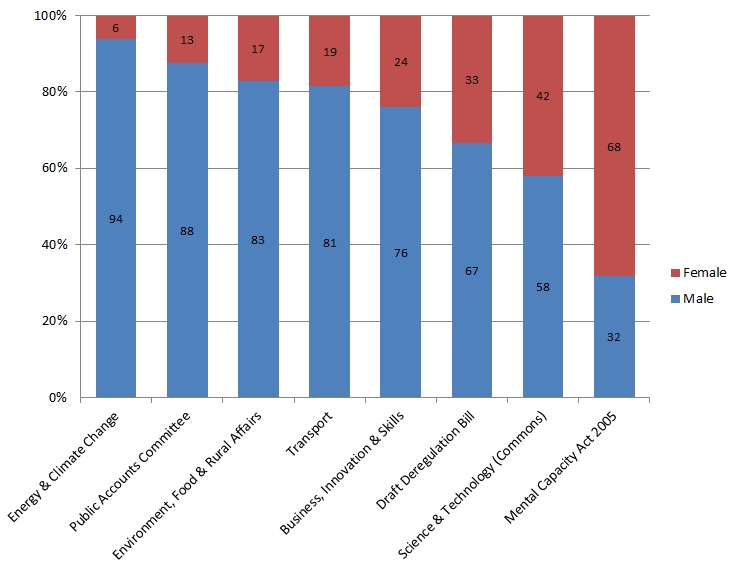
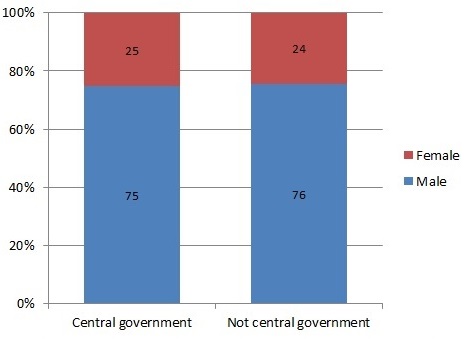
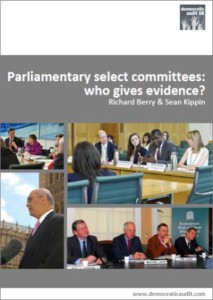




 Democratic Audit's core funding is provided by the Joseph Rowntree Charitable Trust. Additional funding is provided by the London School of Economics.
Democratic Audit's core funding is provided by the Joseph Rowntree Charitable Trust. Additional funding is provided by the London School of Economics.
Select committees increasingly significant, but show an enormous gender bias in their choice of witnesses https://t.co/7wwdpBwNiZ
RT @janetinkler: 83% of the academics that appear before a select committees are men. Great post on inquiry witnesses @democraticaudit http…
@thewomensroomuk seen this? “@se_kip: the yawning gender gap on Parliaments committees https://t.co/viPHBmpFkK”
While I take the general point about gender disparity, I think you’ve picked a bad example by using the Statistics and Open Data session held by the Public Administration Committee on 22 October. Given their positions Shakespeare and Shadbolt were obvious and unavoidable choices as witnesses. However, as your own data shows, Prof Helen Margetts and Heather Savory both gave evidence to the same inquiry on 8 October. It’s therefore unfair to suggest the Committee made no effort to find “qualified women willing to contribute” as independent experts.
Thanks Owen. That’s a very fair point. We decided to amend the post accordingly.
RT @miss_mcinerney: .@demsoc: Select committees show enormous gender bias in their choice of witnesses https://t.co/yazjGWlauI < Recent edu…
@demsoc: Select committees show enormous gender bias in their choice of witnesses https://t.co/yazjGWlauI < Recent edu one had 8 men…
Select committees and gender bias. Women it appears are most qualified to talk about mental capacity, but little else.https://t.co/xmDEOH7AMn
AS select committees https://t.co/NIUnuoIsgW
83% of ‘experts’ giving evidence before UK Select Committees are men according to @LSE study – https://t.co/mTSMtUEzYk #everydaysexism #women
Only 24.7% of select committee witnesses are women according to @se_kip on @democraticaudit https://t.co/oQNrehhfxV @Feminist_Times
Interesting @se_kip blog: 75% of select committee witnesses are men. Balance from think tanks is even worse. https://t.co/KoiKEXIyiU
RT @PSAWomenPol: 75% of select committee witnesses are men – new research from @democraticaudit https://t.co/Goz9KYzN4D #womenandpolitics
Who gives evidence to select committees? @democraticaudit analysis https://t.co/haBvVObENA (by orgs) and https://t.co/cNy2AQSHRn (by gender)
RT @merylkenny: Excellent piece from @democraticaudit on huge gender disparity in who gives evidence to UK Pment Select Committees https://t…
RT @naomistocks: Interesting. RT @democraticaudit: 76% of Commons select committee witnesses are men. Our new research: https://t.co/xax2uwX…
RT @democraticaudit: Which select committees need to improve the gender balance of their witnesses? Almost all of them – new figures here h…
RT @sueshepherdHE: Significant gender bias in select committees’ choice of witnesses @GdnWomenLeaders @OpportunityNow1 @thefworduk https://t…
@sianberry did you see this on women giving evidence to select committees? Transport 2nd worst https://t.co/zhFrPkbaHm
RT @LSEReviewBooks: What % of academics called to give evidence at select committees are women? Read today’s post from @democraticaudit ht…
RT @demsoc: Select committees show an enormous gender bias in their choice of witnesses @ Democratic Audit https://t.co/VSEczOTtvf
RT @se_kip: I wonder if this piece about the yawning gender gap on Parliaments committees would be of interest to @everydaysexism https://t.…
RT @se_kip: Gender breakdown of witnesses at individual committees (full post here: https://t.co/UJlZMUDcin) https://t.co/DFHEDqTGCA
RT @ClaudinaRichrds: UK select committees show an enormous gender bias in their choice of witnesses https://t.co/9G5xHsgrZK @GloriaFeldt @ta…
RT @sarahjheseltine: 75% of witnesses at Select Committees are men. What does that say about leadership in the UK? https://t.co/RvwFdVjy00 v…
@democraticaudit Select committees are increasingly significant but show enormous gender bias in their witnesses https://t.co/SAWHZMEpFU #AS2
RT @democraticaudit: Select committees are becoming increasingly significant but show an enormous gender bias in their choice of witnesses …
Select committees show an enormous gender bias in their choice of witnesses by yours truly on @democraticaudit https://t.co/OKyHF8iPZj
RT @LSEImpactBlog: Enormous gender bias in select committees’ choice of witnesses (including academics) https://t.co/be3DnZtRYU https://t.co/…
Select committees are becoming increasingly significant, but show an enormous gender bias in their choice of… https://t.co/OAbCp8Q7Cs